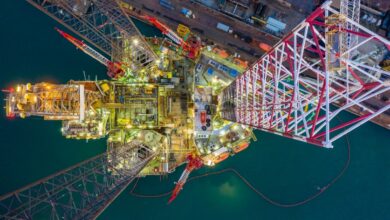Hydraulic fracturing and PEAs allow for smooth treatment in Barnett Shale

In “Coiled Tubing Fracturing: An Operational Review of a 43-Stage Barnett Shale Stimulation,” presented at the SPE/ICoTA Coiled Tubing and Well Intervention Conference on 23 March in The Woodlands, Texas, Juan Carlos Castaneda, region engineer, BJ Services, discussed the challenges of servicing Barnett Shale wells and the stimulation of 43 fracturing stages using hydraulic fracturing and plug enhancement additives (PEA).
“The challenge with the Barnett is that it’s a non-homogeneous formation, meaning that the reservoir’s properties do not hold true throughout the formation. This makes it very unpredictable when treating it,” Mr Castaneda said. “At times treatment is achieved, and at times the formation won’t allow breakdown.”
According to Mr Castaneda’s presentation, 66% of wells in the Barnett today are drilled horizontally to increase production. However, because gravity does not move sideways, PEA in addition to sand plugs were used to reduce 60 ft of spacing in the well in Mr Castaneda’s case study.
He addressed several possible methods to treat a shale well, including “plug and perf,” ball drop sleeves with external swell packers, and horizontal target coiled-tubing (CT) fracturing. Especially in shale wells, achieving a specific stimulation placement is critical to maintain fracture height.

“CT fracturing is a good alternative if the designed fracture treatment is attempting to control fracture height. Controlling fracture height is important if we are trying to contain our treatment, preventing it from fracturing an undesired formation (zone), such as the water zones that underlie parts of the Barnett,” he said. “Another advantage of utilizing CT fracturing is that the treatment precisely targets one perforation zone at a time instead of a longer segment covering a cluster or group of perforations, where it is difficult to determine if we are getting a uniform distribution of the fracture treatment.”
Mr Castaneda highlighted the barrier the Viola Limestone produces between the Barnett Shale and Ellenberger, which is often referred to as “the ocean” because it contains enough water to “ruin the economics of producing a well,” he said.




